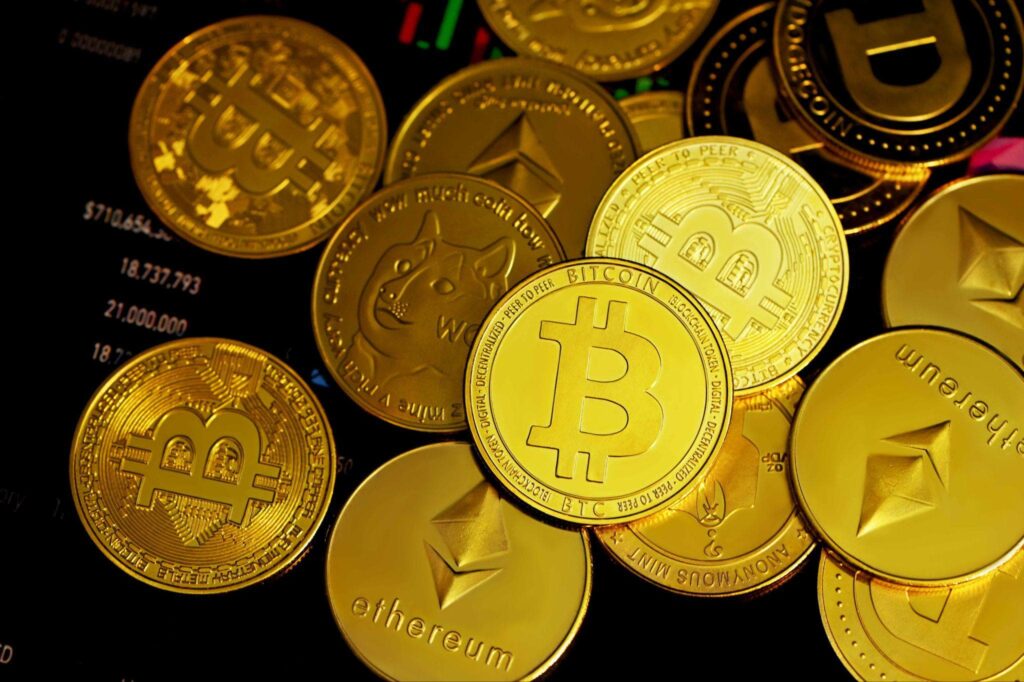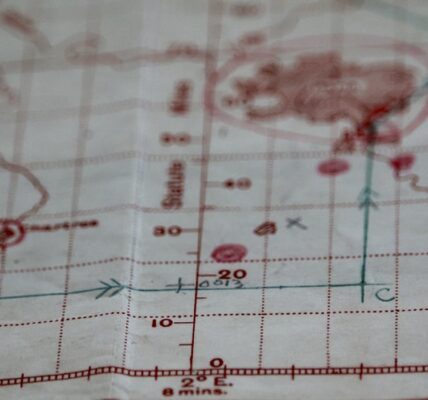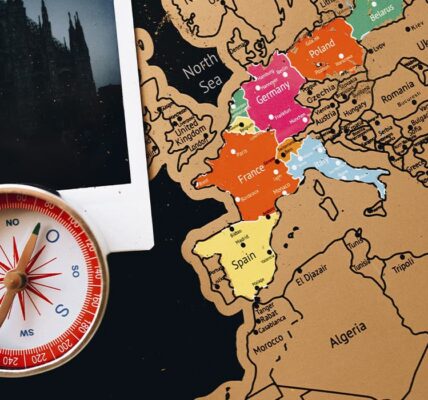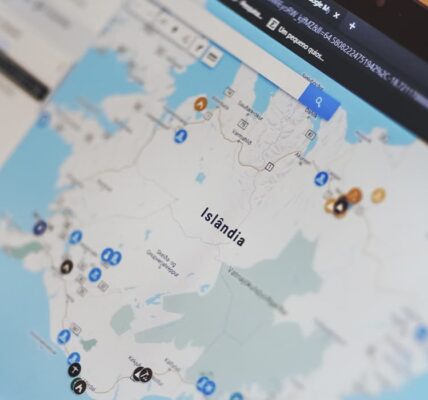Have you ever wondered how techniques from a centuries-old field like geology could shed light on our modern digital landscape? It might seem surprising at first, but there’s a fascinating parallel between the time-honored art of mining for precious metals and the new age of cryptocurrency mining. Today, we’ll explore how the age-old methods of geological analysis and forecasting can be applied to understand trends in the cryptocurrency market—all while keeping things friendly and easy to follow.
A Look Back: The World of Traditional Mining
Let’s start by talking about geology and mining as they’ve been practiced for generations. Geology, at its core, is the study of the Earth—its materials, its layers, and the processes that have shaped it over millions of years. Back when prospectors roamed rugged terrains with maps and picks, geologists relied on tools like seismic surveys, rock sampling, and detailed mapping to find where valuable minerals were hiding. These techniques allowed them to predict where high-quality deposits might be located and helped miners decide where to dig.
What really set traditional mining apart was the way professionals sifted through data—evaluating rock formations, analyzing soil samples, and creating maps that illustrated potential hotspots for resource extraction. Their careful approach ensured that they made informed decisions and minimized both financial risk and environmental impact. It wasn’t just about the thrill of the find; it was about understanding the land and working in harmony with nature’s cues.
The Rise of Digital Mining: A New Frontier
Fast forward to today, and you’re likely hearing the term “mining” in a completely different context. In the realm of cryptocurrencies, mining isn’t about picking through dirt or cracking open rocks. Instead, it’s about using computers to solve mathematical puzzles, which in turn verifies transactions on a blockchain network. When someone successfully solves these puzzles, they’re rewarded with digital coins—much like a miner who discovers a rich vein of ore.
Now, you might ask, “How do these two seemingly different worlds connect?” Well, if you think about it, both physical mining and digital mining share the goal of extracting value from a resource. In traditional mining, that resource is a physical substance; in digital mining, it’s information and computational power. Despite the differences, both fields rely heavily on analyzing data, forecasting potential returns, and managing risks carefully.

Borrowing from Geology: Forecasting in the Crypto World
Imagine a geologist studying layers of rock to predict where the next mineral deposit might be found. Now, picture a cryptocurrency analyst combing through streams of market data and blockchain records to spot trends that could signal a big price movement. The basic idea is the same: use past information and current signals to make an educated guess about the future.
In the mining world, experts use spatial analysis, historical data, and probabilistic models to predict where rich veins of minerals might be hidden. Similarly, crypto analysts look at market sentiment, transaction volumes, and historical price trends to forecast the next big thing. Both fields thrive on the ability to see patterns where others might only see randomness. And honestly, isn’t it kind of amazing how techniques developed to search for gold can be adapted to navigate digital currencies?
The common thread here is the reliance on data—whether it’s geological data from the Earth’s crust or digital data from a blockchain. Both types of analysis require a mix of art and science, intuition and hard facts. It’s this blend that gives us confidence in our predictions, whether we’re planning a mining expedition or deciding which cryptocurrency to invest in.
The Media’s Role: Shaping Our Views on New Technologies
You know how a great documentary can change the way you see the world? That’s true for both traditional mining and the digital currency scene. Films and media have a powerful influence on how people perceive and understand emerging technologies. Documentaries about mining often highlight the adventure, the risk, and the reward—making the idea of digging for precious metals seem almost heroic.
Similarly, documentaries and media pieces about cryptocurrencies have started to paint a picture of a new financial frontier. They explore how digital currencies work, the innovative ideas behind them, and the challenges faced by those who believe in their potential. One insightful article on FilmDaily, for example, brings together a collection of cryptocurrency documentaries that dive into these themes. If you’re curious about how filmmakers are capturing the spirit of the crypto revolution, check out this FilmDaily article on cryptocurrency documentaries. It’s a great way to see the human side of this technological shift.
A Fresh Look at Mining: From Energy-Intensive to Sustainable Income
While traditional cryptocurrency mining involves heavy computational work and significant energy consumption, there’s a new trend that’s gaining momentum—staking. Unlike mining, staking doesn’t rely on brute force. Instead, it involves holding a certain amount of cryptocurrency in a wallet and participating in the network’s operation, which helps secure the system and verify transactions. In return, participants earn rewards.
Think of staking as a more sustainable and balanced approach. It’s similar to how some mining operations shift from aggressive extraction methods to more measured, long-term strategies that yield consistent results. Investors who embrace staking can enjoy a more predictable income, much like miners who carefully plan their digs based on detailed geological surveys.
For those who want to understand more about how staking works and why it’s becoming an attractive alternative in the crypto space, I recommend taking a look at this article on crypto staking as another way to earn cryptocurrencies. It offers a thorough explanation of the process and its benefits, making it clear how staking can serve as a reliable source of income without the heavy energy footprint of traditional mining.
Drawing Parallels: What Geology Teaches Us About Digital Mining
When you compare the techniques used by geologists with those employed by crypto enthusiasts, the similarities are striking. Both approaches require a deep dive into data, careful forecasting, and an ability to adapt to changing conditions. For example, in both fields, professionals need to be comfortable with uncertainty and ready to adjust their strategies as new information comes to light.
One key lesson we can learn from geology is the importance of diversification. In traditional mining, companies often explore multiple areas and use various methods to minimize risk. Crypto investors and miners can apply the same principle by spreading their investments and not putting all their eggs in one basket. This approach helps manage risk and increases the chance of steady returns.
Another takeaway is the value of embracing new technology. Just as geologists have adopted tools like satellite imaging and 3D mapping to better understand the Earth’s subsurface, crypto analysts are using advanced analytics, machine learning, and real-time data monitoring to stay ahead of market trends. This blend of time-tested methods and innovative techniques is what makes the future of digital mining so promising.
What Lies Ahead: Merging Old Wisdom with New Tech
The convergence of traditional geological methods with modern digital analysis opens up exciting possibilities. It’s a bit like watching a seasoned explorer team up with a tech-savvy adventurer—their combined skills create a formidable force capable of tackling the unknown. This collaboration can lead to smarter strategies, better risk management, and ultimately, more successful outcomes in both resource extraction and cryptocurrency investments.
Moreover, the spirit of collaboration that has long characterized the geological community is something the crypto world can truly benefit from. Sharing insights, discussing trends, and learning from each other are practices that not only drive progress but also help create a more resilient and adaptable industry. After all, whether you’re studying rock formations or blockchain transactions, the goal is the same: to make informed decisions that lead to lasting success.
Wrapping It Up
In wrapping up, it’s clear that the digital transformation of mining isn’t just about swapping picks for processors—it’s about applying time-honored methods of analysis to a brave new digital frontier. By taking a page from the geological playbook, those of us exploring the crypto market can benefit from data-driven insights and proven forecasting techniques. Whether you’re a seasoned miner or a curious newcomer to digital currencies, the lessons drawn from geology remind us that careful observation, rigorous analysis, and a willingness to adapt are key to any successful venture.
So, next time you hear someone talking about mining, whether it’s digging for gold or mining for Bitcoin, remember that the underlying principles share a common foundation. The careful, methodical approach that guided ancient prospectors is still very much alive today—just in a slightly different form. And isn’t it fascinating to see how the old and the new can come together to create something truly innovative?
Ultimately, the journey from the depths of the Earth to the realm of digital currencies is one of human ingenuity and relentless curiosity. As we continue to explore these parallel worlds, the lessons from geology provide a steady guidepost, helping us navigate uncertainty and seize new opportunities. With a mix of tradition and innovation, we can look forward to a future where both physical and digital mining contribute to a richer, more sustainable economy.




